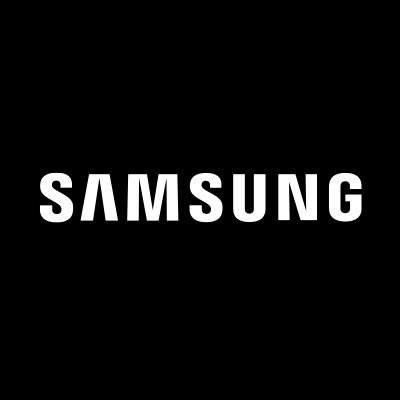The Future of Mobile: Google’s Bold Android Redesign and the Rise of OEM Advertising
May 16, 2025, 12:11 am

Location: Belgium, Brussels-Capital, Brussels
Employees: 10001+
Founded date: 2004
Total raised: $440K

Location: United States, California, San Francisco
Employees: 10001+
Founded date: 1938
Total raised: $6.4B
In the fast-paced world of technology, change is the only constant. Google has just thrown down the gauntlet with a major redesign of its Android operating system. This move comes just as Apple prepares to unveil its own updates. The battle for mobile supremacy is heating up.
Google’s new design language, dubbed Material 3 Expressive, is a breath of fresh air. It’s not just a facelift; it’s a complete overhaul. Think of it as a new suit for an old friend. The new look is bolder, more vibrant, and packed with personality. The aim? To create a more natural and fluid experience for users. This redesign isn’t just for show. It’s built on extensive research, with 46 studies and over 18,000 participants guiding the changes. The goal is to make Android more usable, especially for older users.
The new design features springy animations, larger typography, and a playful use of shapes and contrast. It’s like a dance party for your screen. Users can expect a more personalized experience, allowing them to tailor their devices to their liking. This is a significant shift in how Android operates, making it feel less like a rigid system and more like a living, breathing entity.
But the redesign doesn’t stop at smartphones. Google is extending these changes to Wear OS, its smartwatch operating system. Imagine your watch not just telling time but also reminding you of appointments and keeping your battery life in check. It’s a leap towards a more integrated ecosystem.
However, change takes time. While Google is ready to roll out these updates, device manufacturers like Xiaomi and Oppo will control their own update schedules. This means users may have to wait a bit longer to experience the new features. App developers will also need to adapt their software to align with Google’s new design language. It’s a ripple effect that could take months to fully materialize.
On the security front, Google is stepping up its game. The company is expanding its AI-powered Scam Detection tool, now targeting a wider range of fraud schemes. This is crucial in a world where digital scams are rampant. Users can feel more secure knowing that their devices are equipped to handle potential threats.
As Google prepares for its Google I/O developer conference, the anticipation is palpable. The event, starting on May 20, will showcase these changes in detail. It’s a chance for developers and users alike to see what the future holds for Android.
Meanwhile, in a different corner of the tech world, Admitad is making waves with its new OEM Advertising division. This initiative aims to drive mobile growth through partnerships with device manufacturers. Think of it as a bridge connecting brands and users right at the device level.
Admitad’s OEM Advertising allows brands to reach users in a more integrated way. Ads can appear in pre-installed apps, system notifications, and even on lock screens. This is a game-changer in a privacy-first digital landscape where traditional advertising channels are becoming less effective.
The potential reach is staggering. With partnerships with major OEMs like Samsung, Xiaomi, and Huawei, Admitad taps into a pool of over 1.5 billion active users worldwide. That’s a vast audience waiting to be engaged. The diverse ad formats available, from dynamic preloads to native placements, ensure that brands can tailor their campaigns to fit various user touchpoints.
Performance-based models add another layer of appeal. Advertisers can choose from cost-per-install (CPI), cost-per-action (CPA), or hybrid models. This flexibility allows for measurable outcomes and optimized spending. It’s a win-win for brands looking to make a mark in the mobile space.
Admitad’s commitment to transparency and efficiency is evident in its advanced tracking and anti-fraud systems. In a world where trust is paramount, these tools ensure that campaigns are not only effective but also reliable.
As mobile continues to dominate the digital landscape, the intersection of design and advertising will shape the future. Google’s Android redesign and Admitad’s OEM Advertising division are just the beginning. These innovations signal a shift towards a more integrated, user-friendly experience.
In conclusion, the mobile landscape is evolving rapidly. Google’s bold redesign of Android aims to create a more personalized and fluid experience for users. At the same time, Admitad’s OEM Advertising division opens new avenues for brands to connect with consumers. The future is bright, and the competition is fierce. As these giants push the boundaries of technology, users can expect a more engaging and secure mobile experience. The race is on, and it’s only just begun.
Google’s new design language, dubbed Material 3 Expressive, is a breath of fresh air. It’s not just a facelift; it’s a complete overhaul. Think of it as a new suit for an old friend. The new look is bolder, more vibrant, and packed with personality. The aim? To create a more natural and fluid experience for users. This redesign isn’t just for show. It’s built on extensive research, with 46 studies and over 18,000 participants guiding the changes. The goal is to make Android more usable, especially for older users.
The new design features springy animations, larger typography, and a playful use of shapes and contrast. It’s like a dance party for your screen. Users can expect a more personalized experience, allowing them to tailor their devices to their liking. This is a significant shift in how Android operates, making it feel less like a rigid system and more like a living, breathing entity.
But the redesign doesn’t stop at smartphones. Google is extending these changes to Wear OS, its smartwatch operating system. Imagine your watch not just telling time but also reminding you of appointments and keeping your battery life in check. It’s a leap towards a more integrated ecosystem.
However, change takes time. While Google is ready to roll out these updates, device manufacturers like Xiaomi and Oppo will control their own update schedules. This means users may have to wait a bit longer to experience the new features. App developers will also need to adapt their software to align with Google’s new design language. It’s a ripple effect that could take months to fully materialize.
On the security front, Google is stepping up its game. The company is expanding its AI-powered Scam Detection tool, now targeting a wider range of fraud schemes. This is crucial in a world where digital scams are rampant. Users can feel more secure knowing that their devices are equipped to handle potential threats.
As Google prepares for its Google I/O developer conference, the anticipation is palpable. The event, starting on May 20, will showcase these changes in detail. It’s a chance for developers and users alike to see what the future holds for Android.
Meanwhile, in a different corner of the tech world, Admitad is making waves with its new OEM Advertising division. This initiative aims to drive mobile growth through partnerships with device manufacturers. Think of it as a bridge connecting brands and users right at the device level.
Admitad’s OEM Advertising allows brands to reach users in a more integrated way. Ads can appear in pre-installed apps, system notifications, and even on lock screens. This is a game-changer in a privacy-first digital landscape where traditional advertising channels are becoming less effective.
The potential reach is staggering. With partnerships with major OEMs like Samsung, Xiaomi, and Huawei, Admitad taps into a pool of over 1.5 billion active users worldwide. That’s a vast audience waiting to be engaged. The diverse ad formats available, from dynamic preloads to native placements, ensure that brands can tailor their campaigns to fit various user touchpoints.
Performance-based models add another layer of appeal. Advertisers can choose from cost-per-install (CPI), cost-per-action (CPA), or hybrid models. This flexibility allows for measurable outcomes and optimized spending. It’s a win-win for brands looking to make a mark in the mobile space.
Admitad’s commitment to transparency and efficiency is evident in its advanced tracking and anti-fraud systems. In a world where trust is paramount, these tools ensure that campaigns are not only effective but also reliable.
As mobile continues to dominate the digital landscape, the intersection of design and advertising will shape the future. Google’s Android redesign and Admitad’s OEM Advertising division are just the beginning. These innovations signal a shift towards a more integrated, user-friendly experience.
In conclusion, the mobile landscape is evolving rapidly. Google’s bold redesign of Android aims to create a more personalized and fluid experience for users. At the same time, Admitad’s OEM Advertising division opens new avenues for brands to connect with consumers. The future is bright, and the competition is fierce. As these giants push the boundaries of technology, users can expect a more engaging and secure mobile experience. The race is on, and it’s only just begun.
